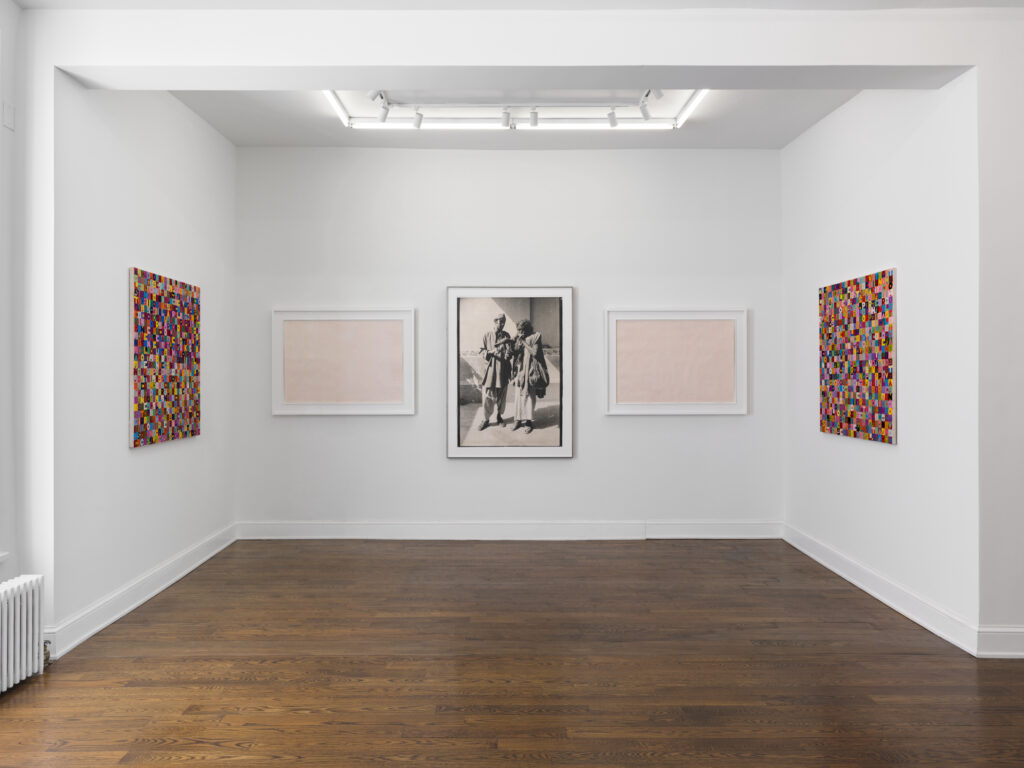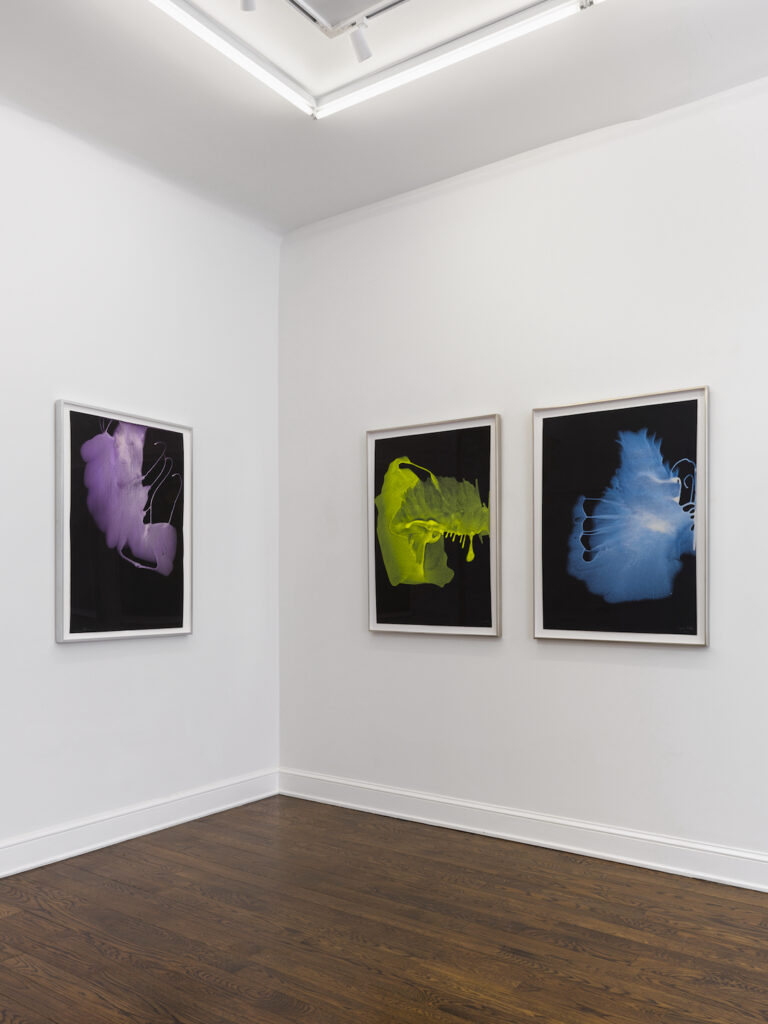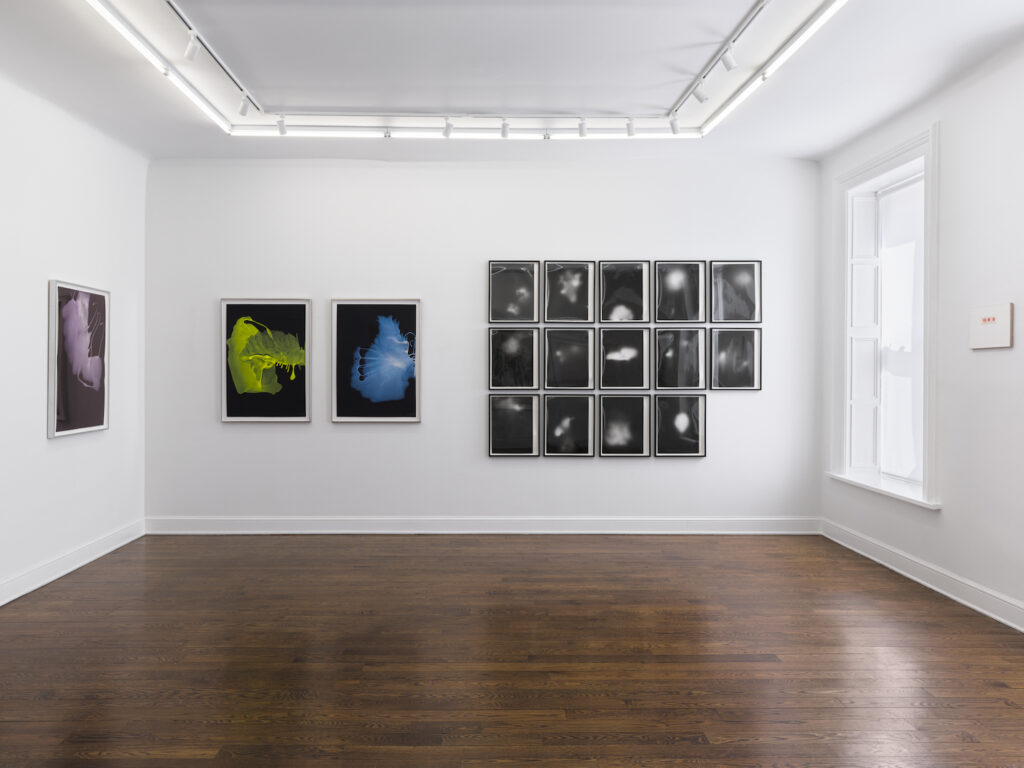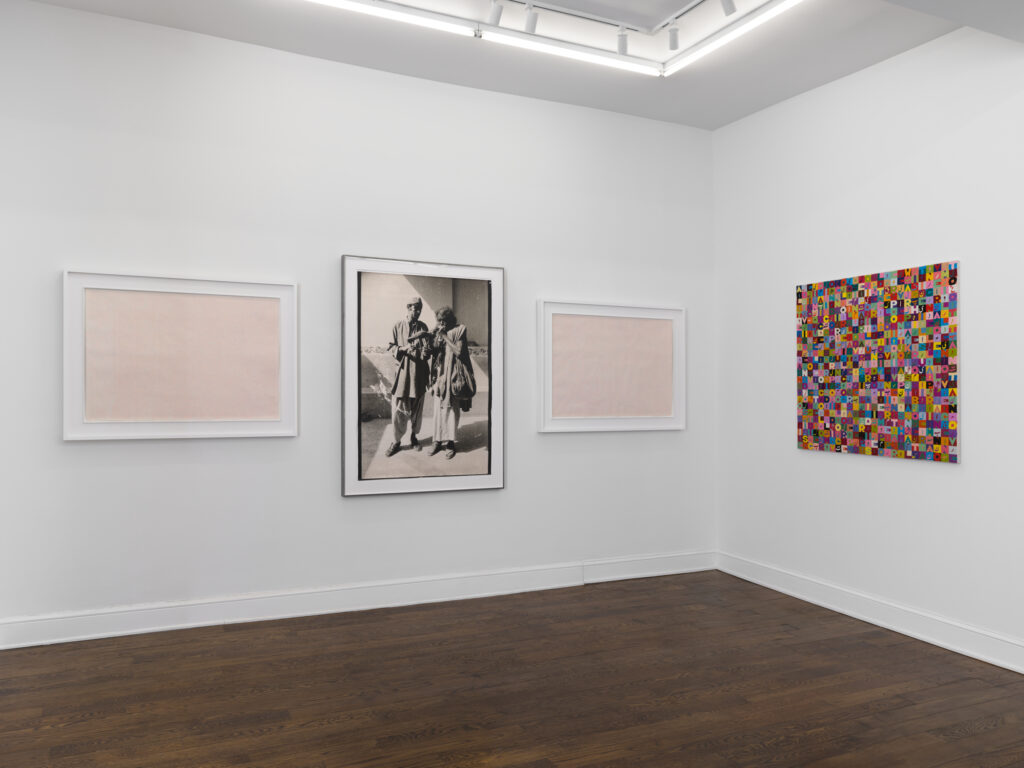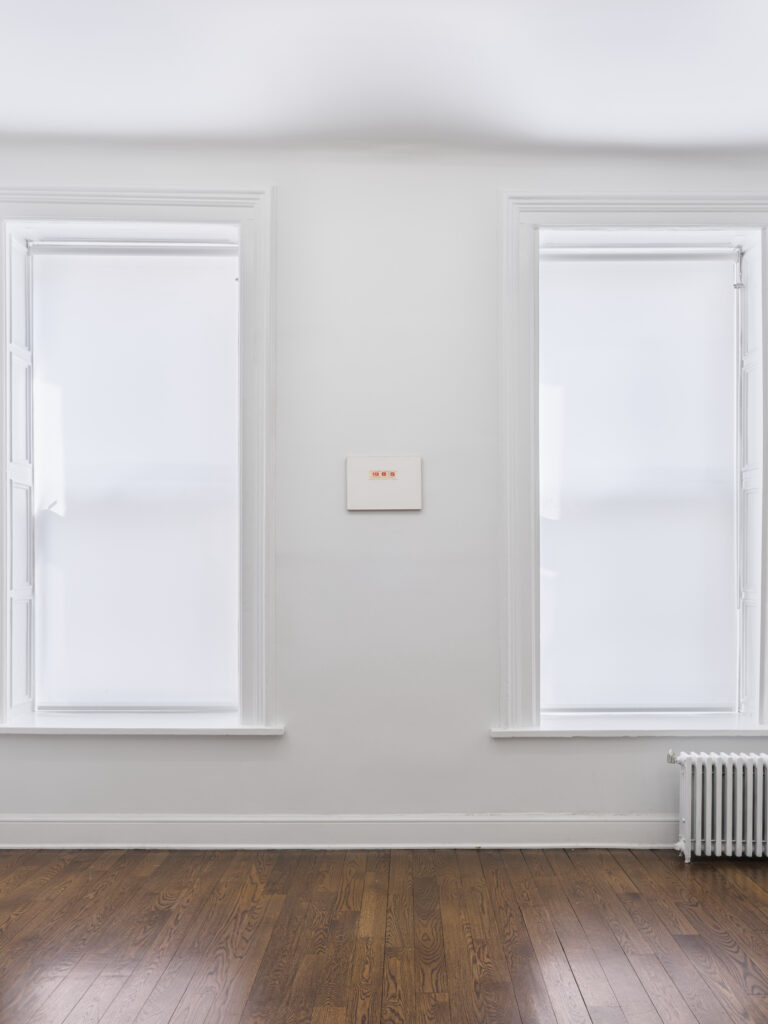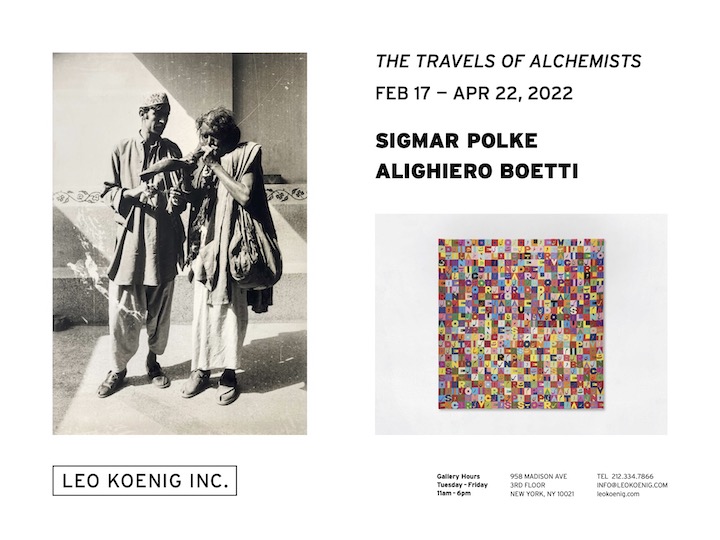Press Release
Leo Koenig Inc. is delighted to announce the opening of The Travels of Alchemists. The exhibition came together after realizing that Sigmar Polke and Alighiero Boetti (who were the same age), made life changing trips to Middle East in the early seventies, following what was then known as the Hippie Trail, wandering through Afghanistan, Pakistan, India, and points beyond. Both artists were greatly influenced and inspired after experiencing the “civilization of the desert,” well before politics made many of the places they visited off limits to westerners.
In the 70’s Polke wanted time away from a life in which the venerable Dusseldorf Academy cast a brilliant but long shadow. He decided to embark on a 6 month journey to Afghanistan and Pakistan, on the aforementioned “Hippie Trail” as a break from a well ordered life, camera in hand to pursue the intangible.
Polke was fascinated by the Middle East, its inhabitants, rituals, and the different relationship to time that seemed to exist there. He was particularly drawn to the opium caves of the Pakistani city of Quetta capturing moments of intimacy which are seldom shown to strangers.. After returning, he worked on the prints with chemicals, often scratching, bending, or painting them with bright colors, Through the manipulations and enhancement of colors, suggest altered states of the photographer as much as the people he photographed. Polke’s images from that time tend to blur the lines of painting, photography, documentation and staging, hallucination and reality.
In a career that embraced painting, sculpture, screen-printing, collage, photography, and film, Sigmar Polke went on to become one of the most varied artists of our recent history. The sheer breadth his output was staggering. As the Artist John Baldessari once said of Polke, “Any one move can provide a career for a lesser artist.” Though much of his work was often rooted in philosophy, chemistry, history, and mythology, Polke’s work never fails to surprise, feel divergent and new. Arsenic, meterorite dust, snail slime, coffee and soap were all in his repertoire of experimentation. And yet, it seemed as an artist, he continuously asked more from his materials. There exists within his oeuvre, the nascent idea of materials that are participatory in the act of creation, much as an invisible hand that guides the resulting image taking shape. For his Uranium series, Polke placed radioactive uranium on photographic plates to produce the aura-like images. In the Interference works; paints made with mica and other light altering materials are allowed to move along treated paper.
For Alighiero Boetti, one of his earliest exhibitions was entitled Shaman /Showman and gives us an initial insight to the artist’s mindset concerning artmaking. Ever consumed with duality in his work and his person, Boetti even changed his name to Alighiero e Boetti (e=and) to indicate there were two sides to his process. Combining the spiritualism of a Shaman with the confidence and aplomb that is the Showman, Boetti suggests the secret to an artist’s journey.
Feeling constricted by Arte Povera, Boetti made a complete a complete break with the movement right about the same time he started his sojourns to the Middle East. The works Cimento Dell’Armonia e Dell Invenzione, Boetti marks the break with scratches and squares with a pencil on a sheet of paper, retracing each square and then to some, slowly adding the slightest coloring. This is what starting anew meant for him. Back to square one? In the artists own words” “In fact in this ‘Cimento’ the only rule is that one must retrace everything. There are infinite possibilities of retracing the squares in different ways… in thousands of different ways, one different from the other and even in such a limited space the emotion and the state of mind with which you have created it emerges.”
For Boetti, Afghanistan and then Peshawar was something of a second home to him. He and a friend even opened a hotel in Kabul for a while called The One. Twice a year, Boetti and his entire family would spend time there as he created collaborations with embroiderers that realized his designs for works. His friendships and partnerships there changed his perspectives and challenged his thinking.
In the Arazzi (Embroidered) works, the themes of Pythagorean grids, gameboards or magic squares unifies the composition to present an exuberant, yet calibrated organization of language, and color into a codex of joy. Incorporating a mosaic of block letters was a way of contrasting order and disorder. Employing the embroiderers from the middle east with whom he had established relationships with, Boetti sent designs for the individual pieces. While the design was Boetti’s own, he entrusted the embroiderers themselves to choose the colors to use. These were made in the 1980s and 1990s and often combined Italian and Persian. Letters from the Western alphabet comingle with those of Abjad on the same plane.
Alighiero Boetti (Turin Italy 1940-1994) was an influential Conceptual artist and leading member of the Arte Povera movement. IN the 1960s, he joined Mario and Marisa Merz, Giulio Paolini, Michelangelo Pistoletto, and Luciano Fabro in forming Arte Povera, a movement that promoted breaking with conventional power structures, corporate mentality, and traditional artistic practices.
Later, Boetti turned to a variety of textiles and modes of production that lie outside of the formal fine arts. Using ball point pens, flags, postal stamps, and textiles of different textures, Boetti created series of Mappa, or maps of the world, which chart political, anthropological, or cultural identities of regions or countries. He commissioned women at embroidery schools in the Middle East to sew some of his map series, incorporating voices from the regions he depicted. He used the postal system, grid structures or arbitrary time frames as a means to explore his deep interested in the role of chance in his artistic production.
Boetti took part in two Documentas and five Venice Biennales, and his works have been exhibited n major galleries and museums in Europe and the United States before his premature death in 1994 as a result of a brain tumor. He has been honored posthumously with seven large scale exhibitions or retrospectives at significant museums including the Whitechapel Gallery, London. the Kunstmuseum Liechtenstein; and the Galleria Nazionale d’Arte Moderna, Rome.
Sigmar Polke (Oels Germany (now Poland) , 1941-2010) is considered as one of the most influential artists of the postwar era. Employing an experimental approach to a wide variety of styles, media, and subject matter, Polke used unconventional and diverse materials and techniques, melded with ironic or humorous imagery, as strategies of social, political, and aesthetic critique.
Starting his training in 1959, as a glass painter, Polke later enrolled at the Staatliche Kunstakademie Düsseldorf to study painting. In 1963, he, along with fellow students Manfred Kuttner, Konrad Lueg, and Gerhard Richter, organized an exhibition of their own work helping to launch the artists’ early careers and introducing the term “Capitalist Realism.”
Polke has been the subject of numerous solo exhibitions at institutions, such as the Kunsthalle Tübingen, Städtische Kunsthalle Düsseldorf, and the Stedelijk Van Abbemuseum, Eindhoven in 1976. In 1983, Museum Boymans-van Beuningen, Rotterdam hosted Sigmar Polke that traveled to Kunstmuseum Bonn in 1984. In 1984. He had a retrospective at the Kunsthaus Zürich and the Josef-Haubrich-Kunsthalle, Cologne. In 1988, Polke exhibited at the Musée d’art moderne de la Ville de Paris. Sigmar Polke. Die drei Lügen der Malerei, was presented at the Kunst- und Ausstellungshalle der Bundesrepublik Deutschland, Bonn, in 1997, and traveled to the Nationalgalerie im Hamburger Bahnhof, Museum für Gegenwart, Berlin in 1997-1998. Retrospectives in the U.S included the San Francisco Museum of Modern Art; the Hirshhorn Museum and Sculpture Garden, Smithsonian Institution, Washington, DC; the Museum of Contemporary Art, Chicago; and the Brooklyn Museum, New York in 1990-1992. MOCA, Los Angeles organized an exhibition of Polke’s photographs (Sigmar Polke: Photoworks. When Pictures Vanish) in 1995-1997, traveling to Site Santa Fe, New Mexico (1996), and the Corcoran Gallery of Art, Washington, DC (1996-1997). MOMA, New York, organized an overview of the artist’s works on paper in 1999, which traveled to the Hamburger Kunsthalle, Hamburg.
Sigmar Polke was included in numerous international biennales, including Documenta, the Bienal de São Paulo, and the Venice Biennale, receiving awards, including the Golden Lion at the West German Pavilion in 1986 at the Venice Biennale, the Erasmus Prize (1994), the Carnegie Prize (1995), the Praemium Imperiale (2002), and the Roswitha Haftmann-Preis (2010). Polke’s work is included in the permanent collections of major museums around the world
The Gallery is open Tues-Friday 11-6. Please observe whatever protocols are in place for NYC when visiting. For more information, please call 212.334.7866 or email us at info@leokoenig.com.
